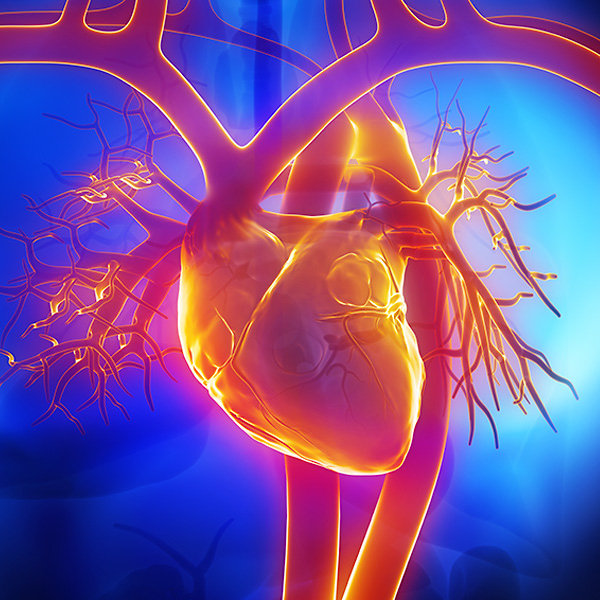Aortic Aneurysm
Experts in Diagnosing, Monitoring and Treating Aortic Aneurysms
Aortic aneurysm is one of the many cardiovascular diseases diagnosed and treated by the highly skilled doctors at Loyola Medicine. Your aorta, the largest artery in your body, is the main mechanism by which your heart supplies blood to the rest of your body. An aortic aneurysm occurs when any portion of the aorta develops an abnormal bulge or enlargement.
When part of the vessel becomes weak and expands, a bulge can form at the weak spot. This bulge usually starts small and can expand with continued pressure. Aneurysms can occur in any artery in the body, and are most common in the arteries of the brain and abdominal aorta. Aneurysms that occur in the abdominal aorta are called abdominal aortic aneurysms (AAA). Those that occur in the thoracic aorta are called thoracic aortic aneurysms.
Though many aneurysms grow slowly and cause no symptoms for years, they can rupture, causing internal bleeding. The abdominal aorta is a large vessel; therefore, a rupture of an abdominal aortic aneurysm can be a life-threatening event. When detected in time, most aneurysms can be surgically repaired to prevent a rupture from occurring.
The cardiovascular team at Loyola has expertise in diagnosing, monitoring and treating the most complex cases of aortic aneurysm, ensuring you get the best care for your particular condition.
How is Aortic Aneurysm Treated?
Treatment for aortic aneurysm depends on the location and size of your aneurysm, as well as your general health. If your specialists suspect blood vessel enlargement, they may choose from two primary courses of treatment:
- Medical monitoring — Often called “watchful waiting,” includes regular visits with your doctor to ensure your aneurysm is not growing and to manage other medical conditions that could make your aneurysm worse
If your doctor determines the risk of a ruptured aneurysm or aortic dissection is greater than the risk of the surgery, repair surgery may be the best option, which can be done in one of two ways:
- Endovascular repair, or transcatheter repair — Does not require a surgeon to open your chest or abdomen. During this minimally invasive surgery, an interventional cardiologist uses a catheter (thin tube) to help place a stent graft (a mesh tube often made of stainless steel) into your aorta. Once the specialist places the catheter, it is moved into the enlarged portion of your aorta (the aneurysm) and the stent graft is placed. The stent graft is a miniature device that redirects blood flow, avoiding the aneurysm. The goal of the surgery is to keep the aneurysm from increasing in size. Typically, the specialist enters the blood vessel through the groin via the femoral artery.
- Open, or traditional, surgery — Used if your femoral artery is too narrow or the location of the aneurysm makes endovascular repair too difficult or risky. Your surgeon may need to make an incision in the chest or in the abdomen, depending on the location of the aneurysm. During open surgery to repair an aortic aneurysm, surgeons open the malformed portion of the aorta and insert a graft (a synthetic tube made of Dacron). Surgeons splice the tube and sew it to the healthy aorta. Blood flow now goes through the graft instead of the aneurysm.
Loyola’s multidisciplinary team of expert cardiologists and surgeons work with you to determine the best course of treatment for your particular condition and select the treatment option that will provide the best outcome and long-term success.
Risks of Aortic Aneurysm Treatment
Your team of specialists at Loyola approaches the treatment of aortic aneurysm with great detail and care. While positive outcomes are our number one priority, as with any surgical procedure, complications can occur.
Endovascular repair could result in the following complications:
- Bleeding
- Continual leaking of blood out of the graft and into the aneurysm sac with potential rupture
- Damage to surrounding blood vessels, organs or other structures
- Groin hematoma
- Groin wound infection
- Kidney damage
- Limb ischemia (loss of blood flow to leg/feet) from clots
- Spinal cord injury
Open surgery could result in the following complications:
- Bleeding during or after surgery
- Embolus (clot) to other parts of the body
- Heart attack
- Infection of the graft
- Injury to the bowel
- Irregular heart rhythms (arrhythmias)
- Limb ischemia (loss of blood flow to legs/ feet)
- Lung problems
- Kidney damage
- Spinal cord injury

Request an Appointment
Loyola Medicine heart and vascular specialists have the experience and technology to treat the most difficult cardiac and vascular conditions. Schedule an appointment today.
Schedule a Telehealth Appointment
